Looking northwest.
(Courtesy Duke Archives)
The block of East Chapel Hill St. between Holland St. and Rigsbee Ave. was the site of the William Mangum homestead and farm, which stretched west to present-day Morris St, and the AM Rigsbee house - Rigsbee's farm extended east across present-day Rigsbsee Avenue. These homesteads were two of the earliest houses in the area that became Durham. There is a bit of legend that Mangum's house was where Sherman stayed during the surrender proceedings at Bennett Place, but my understanding is this is unsubstantiated.
William Mangum house, looking north from present day Chapel Hill St - late 1800s.
(Courtesy Duke Archives)
Blount map of Durham in 1867, showing Mangum and Rigsbee property on the north side of "Now Green Street" (now East Chapel Hill St.) Number 50 indicates William Mangum's house, number 51 indicates AM Rigsbee's house.
(Courtesy Durham County Library)
Below, the 1890s Bird's Eye view of Durham shows the two houses, side-by-side on the north side of Green St. (later Chapel Hill St) to the left of Rigsbee Ave.
As Green St. changed to Chapel Hill St. and the character shifted from residential to light industrial/commercial (including the construction of the Harris Service Garage immediately to the west,) the William Mangum house was destroyed, but the AM Rigsbee house persisted.
Looking northwest.
(Courtesy Duke Archives)
Above, the area in 1924. The Hotel Corcoran, with its twin mansard roofs, is at the left on East Chapel Hill St. To its right, the low, wide, flat-roofed structure is the Harris Garage, and immediately to its right is the AM Rigsbee house.
(To its right, across Rigsbee, is the commercial building that now houses Rue Cler. In the foreground is the top of the First Baptist Church, before it moved to Cleveland St.)
From the corner of Rigsbee Ave and East Chapel Hill St., looking northwest at the AM Rigsbee house, ~1920s.
(Courtesy Duke Rare Book and Manuscript Collection - Wyatt Dixon Collection)
Lest anyone think that I too greatly romanticize the landscape and architecture of the early 20th century, I must say that one thing I have learned in doing this site is that, by the 1920s, there was a gas station/pump in seemingly every conceivable, available space downtown. One of the largest early service stations was the Harris Garage/Hotel Gas and Storage. An interesting phenomenon of many of these early establishments was the combination of gas station and parking garage - you would leave your car at the parking garage, which would fuel and service your car while you were gone.
Looking northeast from the Washington Duke Hotel, 1920s
(Courtesy Duke Archives)
Looking northwest.
(Courtesy Duke Archives)
Looking southeast from 'under' the garage.
(Courtesy Duke Archives)
By 1934, the US Post Office at Corcoran and Main Sts. had become overburdened and the Postal Service Commissioned a new facility at a cost of $300,000, to be built at the site of the garage and the AM Rigsbee house. Below, a series of shots from 1934, showing construction.
(Courtesy Durham County Library)
Wooten-Moulton Studios
The Post Offfice remains in use today, although I periodically hear some rumors about the P.O. wanting to minimize operations more at this facility. It's amazing to go here for some mundane post office task and realize how much pride we used to take in our architecture - for it to be both beautiful and functional. Not much comparison with the mini-mall post offices that seem to be the facility-of-choice now.
Looking north from Orange St., 2007.

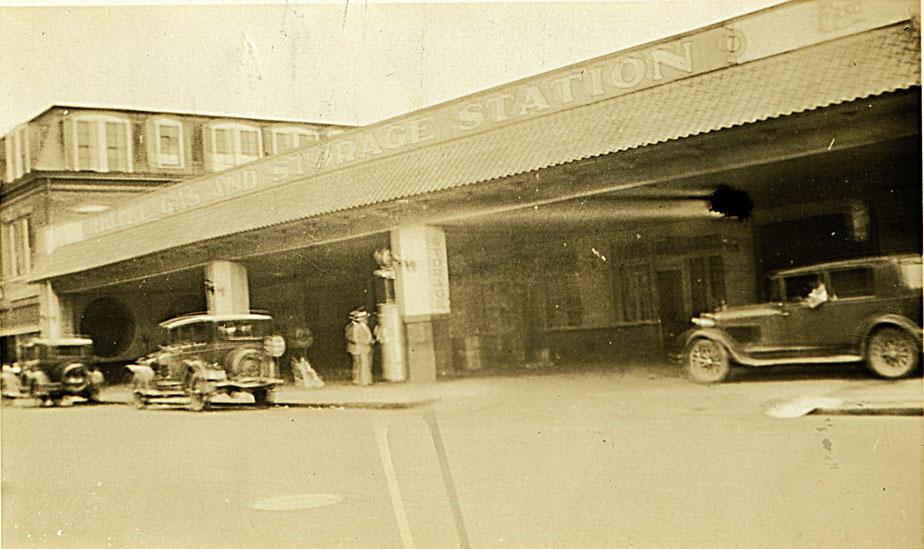
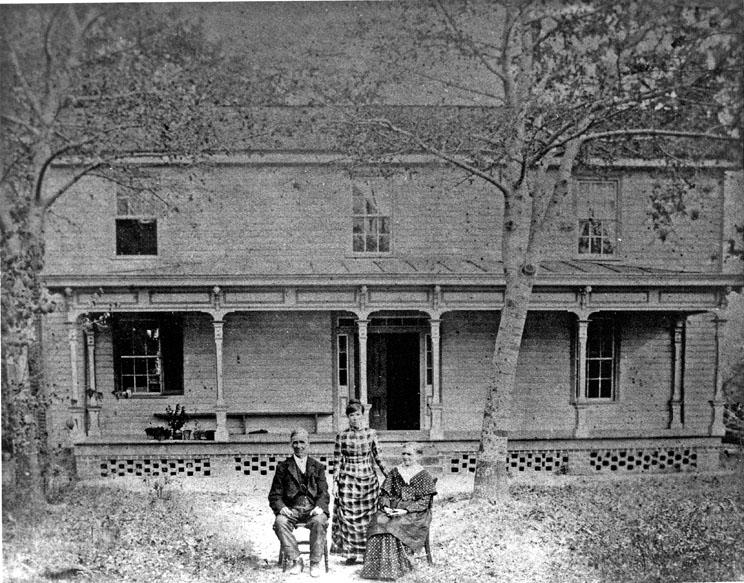
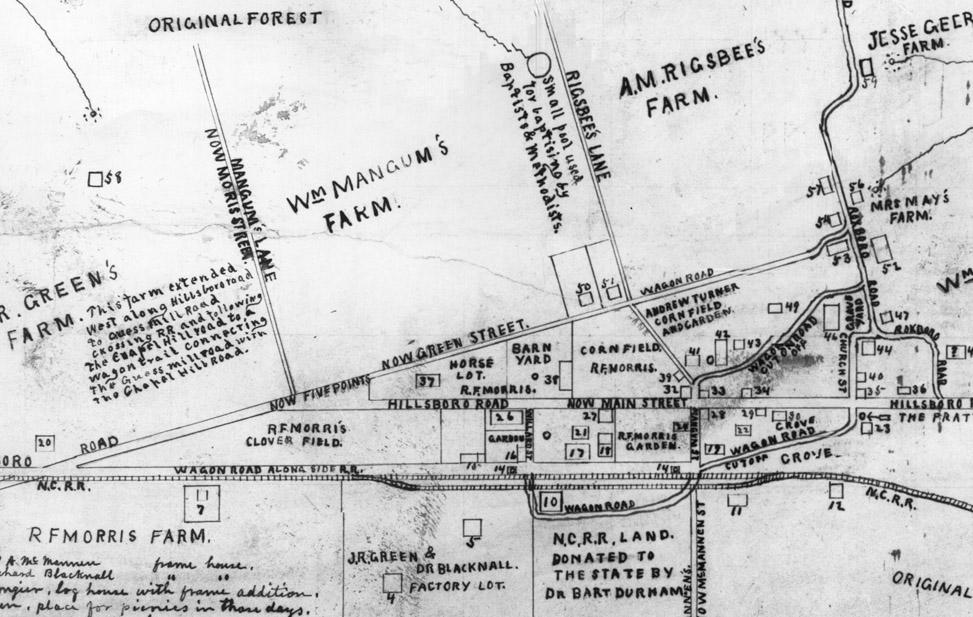
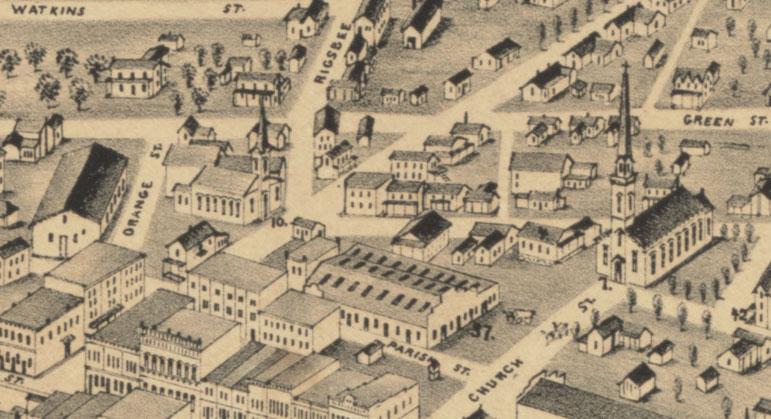
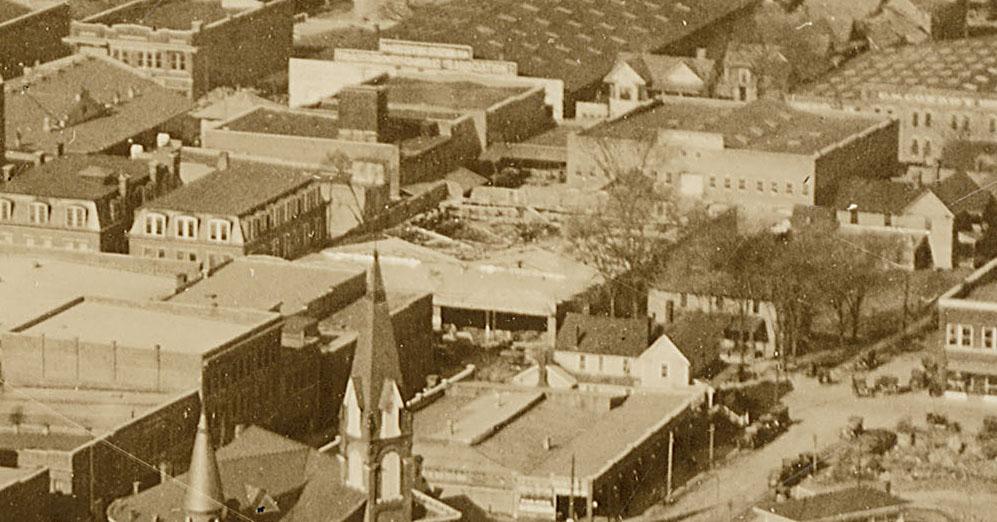
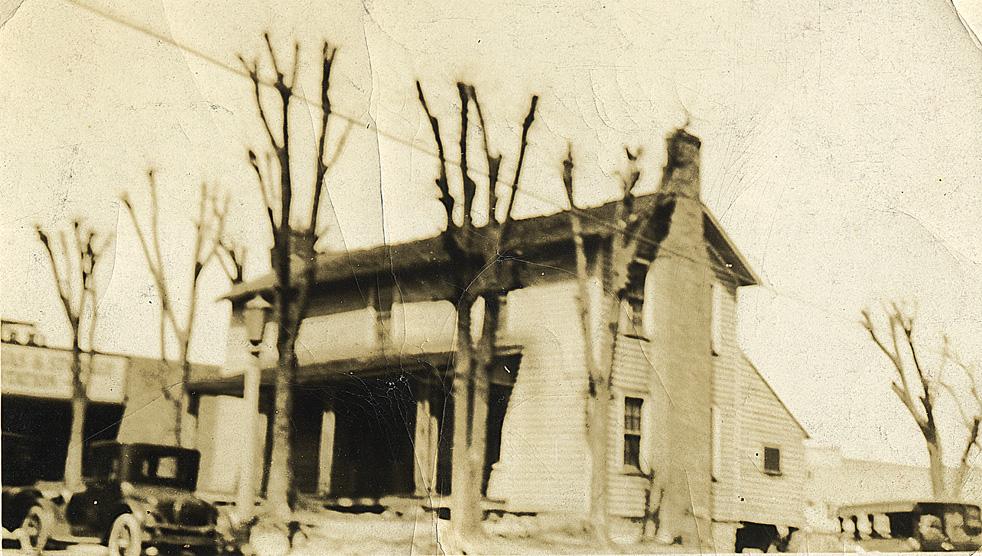
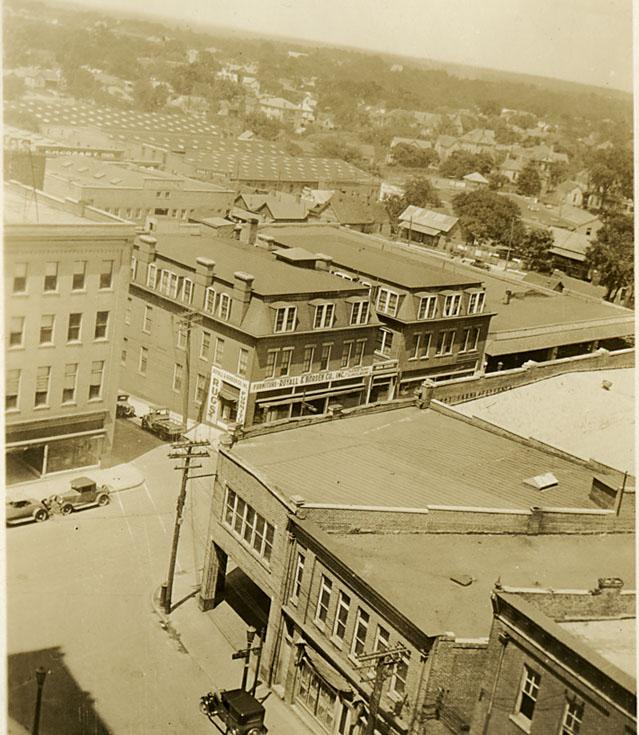
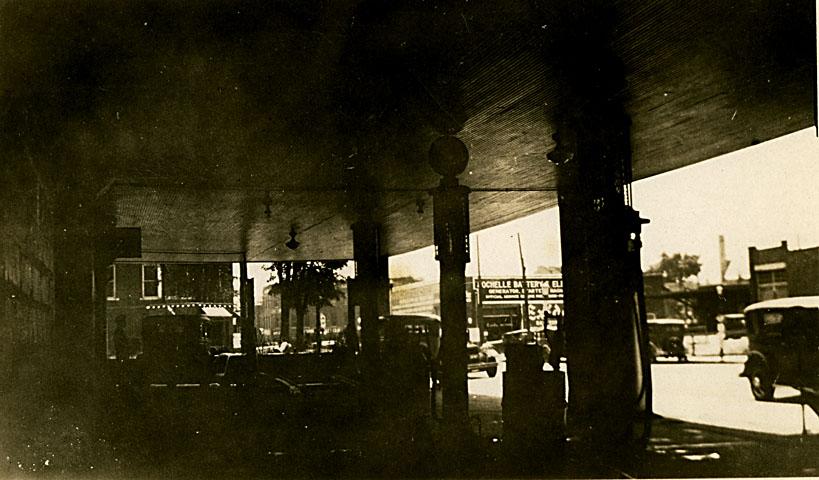

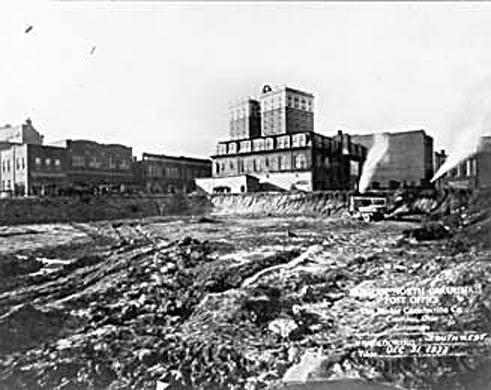
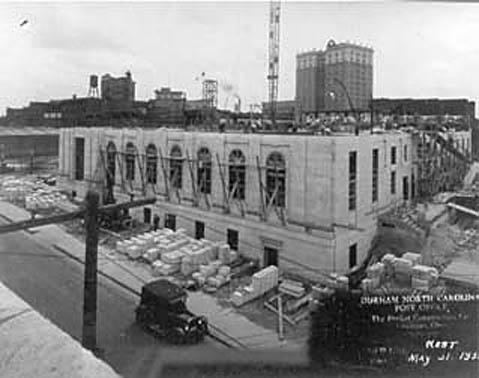
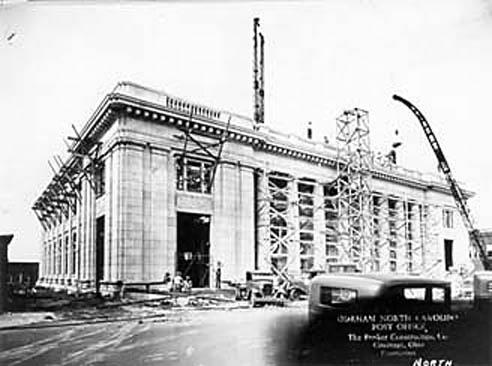
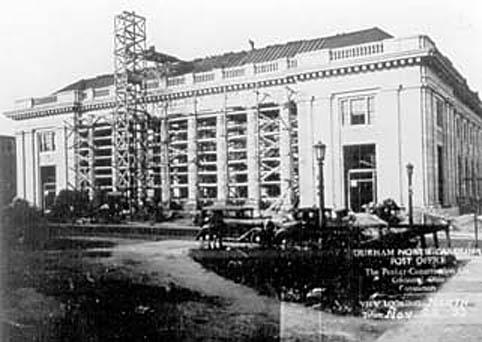
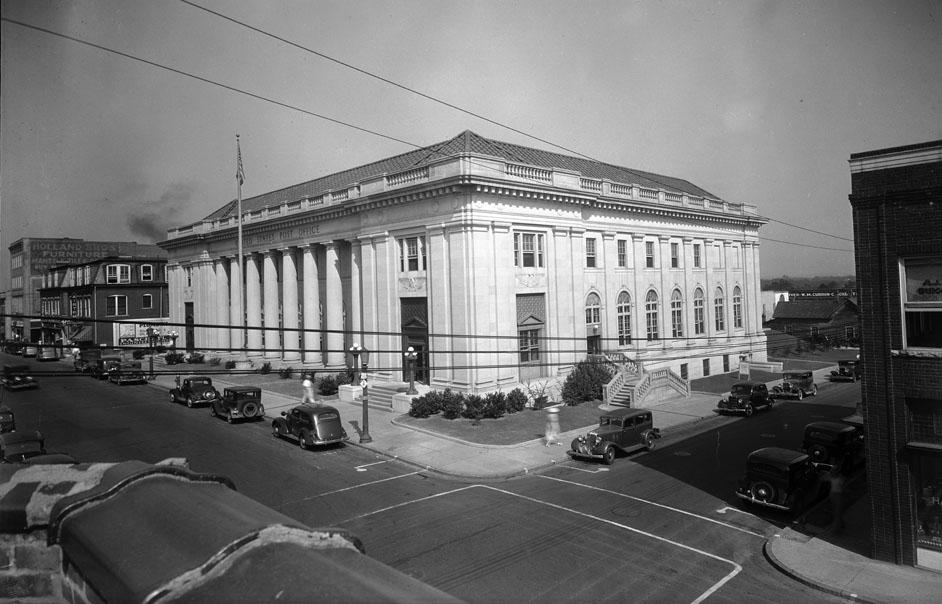
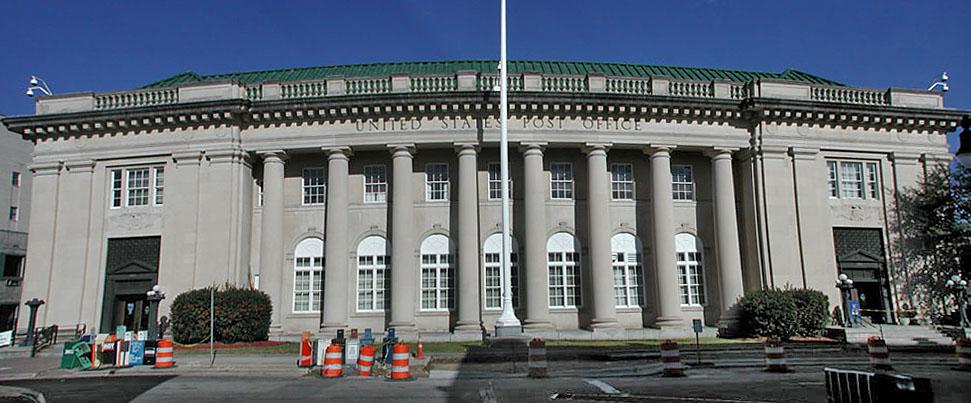
Add new comment
Log in or register to post comments.